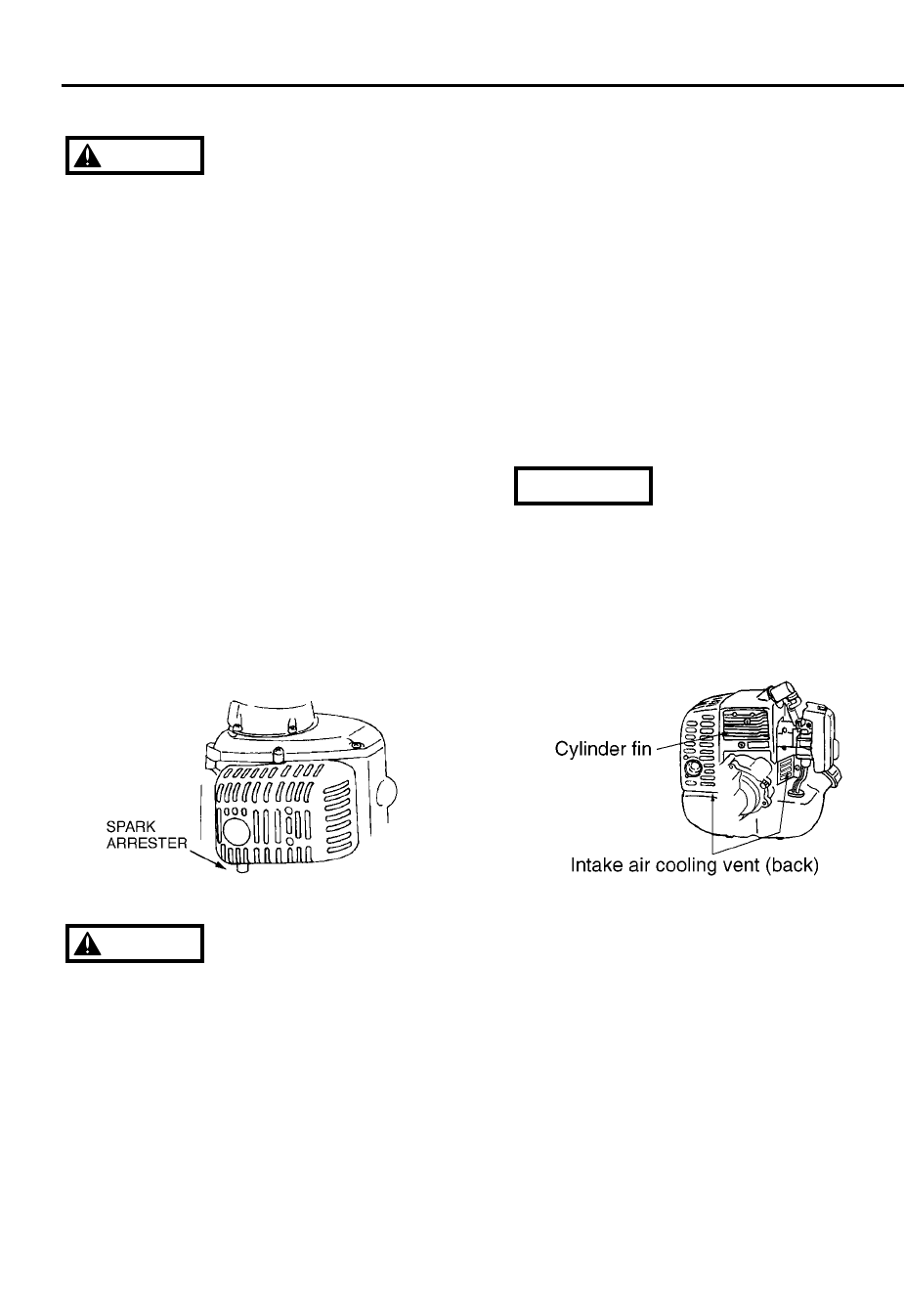
overheated, and that this in turn could
cause the hedge-trimmer to catch on
fire. Always make sure that the muffler
is clean and free of wood chips, leaves,
and other waste before use.
• Check the intake air cooling vent and the
area around the cylinder cooling fins after
every 25 hours of use for blockage, and
remove any waste which has attached itself
to the hedge-trimmer. Note that it is
necessary to remove the plug guard shown
in Figure 20 in order to be able to view the
upper part of the cylinder.
• If waste gets stuck and causes blockage
around the intake air cooling vent or
between the cylinder fins, it may cause the
engine to overheat, and that in turn may
cause mechanical failure on the part of the
hedge-trimmer.
IMPORTANT
Maintenance
■ MUFFLER
• Inspect periodically, the muffler for loose
fasteners, any damage or corrosion. If any
sign of exhaust leakage is found, do not
use the hedge-trimmer and have it repaired
immediately.
• Note that failing to do so may result in
the engine catching on fire.
■ SPARK ARRESTER
• The muffler is equipped with a spark
arrester to prevent red hot carbon from
flying out of the exhaust outlet. Periodically
inspect and clean as necessary with a wire
brush. In the State of California it is
required by law (Section 4442 of the
California Public Resources Code) to equip
a spark arrester when a gas powered tool
is used in any forest covered, brush
covered, or grass covered unimproved
land.
■ INTAKE AIR COOLING VENT
• Never touch the cylinder, muffler, or
spark plugs with your bare hands
immediately after stopping the engine.
The engine can become very hot when
in operation, and doing so could result
in severe burns.
• When checking the hedge-trimmer to
make sure that it is okay before using it,
check the area around the muffler and
remove any wood chips or leaves which
have attached themselves to the hedge-
trimmer. Note that failing to do so could
cause the muffler to become
WARNING
WARNING
❲
13
❳


















